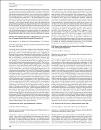Real-Time PCR Quantification of Metallothionein Gene Expression in Sprague–Dawley Rats Chronically Exposed to Cd
Date
2012-09-01Metadata
Show full item recordAbstract
Toxicologic impact of Cd leads to multiple human pathologic conditions,
and its effect on humans and animals has been extensively studied.
Physiologic function of metallothionein (MT1) is not completely understood,
but it is mainly associated with detoxification of Cd and Hg.
Elevated synthesis of MT1 exposed to metals has been observed but
data on quantitation in various tissues is limited. We measured MT1
levels in peripheral blood and tissue samples of rats exposed to CdCl2.
The objective is to investigate the effect of chronic exposure of Cd on
peripheral blood and tissue-specific expression of MT1. This will provide
information of MT1 gene transcription regulation and its impact
on the heavy metal detoxification process. Rats raised in our animal
facility were assigned to 8 experimental groups. Daily dose of 15 mg/
kg body weight CdCl2 in drinking water was administered for 8 wk. The
control group received tap water free of Cd. Peripheral blood samples
collected at 4 occasions (week 2, 4, 6, and 8) in EDTA tubes by retroorbital
bleeding procedure. Liver and kidney tissue samples were collected and
weighed. Total RNA/cDNA was prepared and quantified according to
manufacturer’s protocol. Premade MT1 gene expression assay was used
while β-actin gene was the endogeneous control. Results from week 2
and 4 showed the trend of upregulation of MT1 gene (fold increase)
while the sample from all the other occasions showed downregulated
response of MT1. Week 4 sample showed the fold increase of 1.11 times
compared to week 2 increase of 1.04. Though the recorded 1.1-fold difference
in the gene expression is not high, it gives an indication that
there was an induction of MT1 gene. The downregulated pattern of MT1
gene might be due to the overaccumulation of repressor apothionein
protein which stops MT1 transcription. When the metal binds to the
promoter region of the MT1 gene-repressor protein, it becomes inactive
and increases the MT1 transcription, but at the same time accumulation
of repressor protein downregulates MT1 gene. Our observations suggest
that chronic Cd exposure elicits an elevated MT1 gene expression which
in turn leads to detoxification. More elaborative study is warranted for
further understanding of MT1 gene expression.
DOI/handle
http://hdl.handle.net/10576/5521Collections
- Biological & Environmental Sciences [931 items ]
- Laboratory Animal Research Center (Research) [129 items ]


